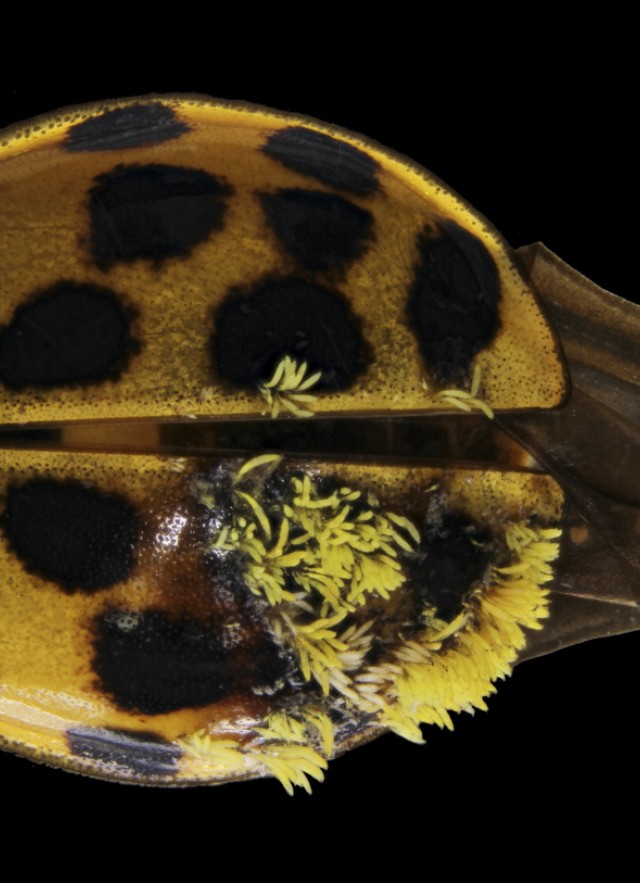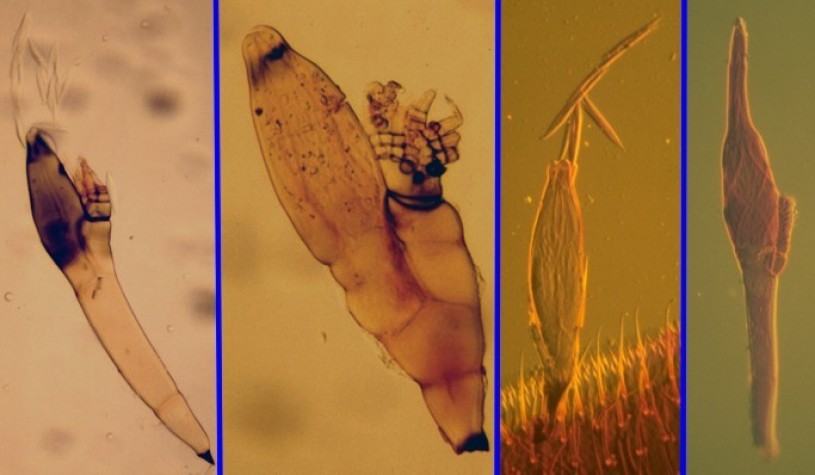The Birds and the Bees of Ladybug STDs
Mulitcolored Asian ladybug, Harmonia axyridis, collected from the roof of Angel City Brewery in Downtown LA. Ladybug date night?

Sometimes I feel like I have seen it all when it comes to the bizarre happenings of the bug world. Like some sort of insect inception (insection?), there are insects that live on insects, insects that live inside other insects as parasites, and even parasites on the parasites of those insects! I see evidence of these strange phenonmena regularly as I sort samples of insects from Los Angeles, but recently I came across a ladybug that had something I had never seen before. On top of the hardened wing covers, which entomologists call elytra, were oblong projections that covered the beetle like a tacky orange shag rug. Were they eggs of a ladybug parasite? Or some sort of mite? I immediately asked our talented photographer, Kelsey Bailey, to take photos of this specimen so that I could share the image in hopes of unraveling the enigma.
A Sexually Transmitted Ladybug Fungus
The astounding answer came from a colleague at the UC Riverside Entomology Research Museum, Dr. Doug Yanega. The mystery fuzz was identified as the parasitic Laboulbeniales fungus, which incredibly feeds off of internal vital fluids. This fungus is unlike any other; it is only found living on the exoskeletons of hard-bodied creatures like beetles and their kin, and must be spread by direct body-to-body contact. Fortunately for the fungus, some insects like to take it slow when it comes to mating, allowing for that direct contact needed for the fungus to spread.
Certain ladybug species stay locked in copulation for a minimum of 30 minutes and as a group are known to have many different partners throughout their adult lifetime. These behaviors can benefit ladybugs in that they assist in successful sperm transfer and maximize genetic diversity, but they also give parasites ample time to hop ship from one ladybug lover to the other. Seven spotted ladybugs, Coccinella septempunctata, mating via GIPHY
It Feeds on Blood!
The realization that the Laboulbeniales fungus, despite its flowery name, is essentially an insect STD, blew wide open my notion of what makes a fungus a fungus. While most fungi are important ecologically as decomposers and nutrient recyclers, Laboulbeniales are one of the most unusual, intriguing, and unfortunately poorly studied fungi. They do not form fruiting bodies, what most people know of as mushrooms, but consist only of a simple finger-like structure that attaches and bores into the exoskeleton. The insects’ version of blood, called hemolymph, contains nutrients that the fungus happily sucks up. This is the living version of a pointed straw that you pierce into a child’s juice box, but instead of fruit punch, in this case it’s beetle blood!

A Non-lethal Dose Fear not for the life of the ladybug who has been shagged by the Laboulbeniales fungus! Moderate infections do not appear to be lethal to the infected individual. A study done on yet another ladybug STD, a sexually transmitted mite, showed that the ladybug’s life span was too short to succumb to the pressure of the parasite. In other words, they die of old age before the infections become serious. This ensures that future generations of ladybugs will continue to congregate and live out their free-love lifestyle in peace and harmony.